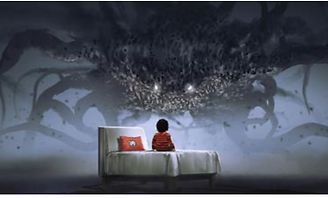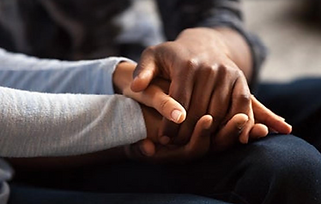
Triquetra Etkinlikleri

Trauma & Counseling
Traumatic events can have a significant, long-lasting, and even debilitating effect on your life. Whether you’ve experienced the loss of a loved one, physical harm, or a threatening event, trauma can be hard to deal with. However, understanding the different stages of trauma can help you be better prepared for the road ahead and help you manage your response to trauma.
What is trauma?
Trauma refers to an emotional response to a significant, negative event. Traumatic events often include physical attack or harm, sexual assault, or wartime combat. Traumatic events can also include ones you witness rather than those that physically harm you. Witnessing a death, experiencing grief, and being present at a terrorist attack can all be traumatic.
Effects of trauma
Trauma can have long-lasting, significant effects, particularly on your mental health. Reactions to trauma can be varied in their symptoms, severity, and length of time. Typical emotional responses to trauma include shock and denial.
Other side effects can also occur from trauma, including the following:
-
An outburst of emotions such as anger
-
Flashbacks
-
Trouble sleeping
-
Feeling on high alert and worried that another traumatic event would occur
-
Feelings of guilt or shame
-
Engaging in reckless behavior, such as excessive drinking or speeding
Trauma can have such an impact that it can lead to the development of physical symptoms such as the following:
-
Body aches
-
Muscle tension
-
Increased heart rate
-
Fatigue
-
Sexual dysfunction
Types of trauma responses
When trauma starts to go awry, we start to see the development of more harmful trauma symptoms that can require treatment to resolve them. While a bit of trauma from a terrible event is normal, people sometimes struggle to move on from the event and have their emotional response return to normal.
Below are some of the more typical responses to trauma:
-
Resistance
With resistance, people respond to trauma without any major issues. Resistance tends to be more common in trauma that does not involve sexual abuse.
-
Natural resistance
Many people who experience a traumatic event have post-traumatic stress disorder (PTSD) with symptoms in the immediate aftermath of the event. However, these symptoms disappear without any treatment intervention for those with natural resistance.
-
PTSD
If the symptoms of natural resistance do not go away on their own, an individual may likely have developed PTSD. A PTSD response to trauma can have serious, negative results on your mental health, physical health, and ability to complete even day-to-day tasks. People with PTSD require treatment, which could involve talking therapy and/or medication.
Other types of trauma disorders
Besides PTSD, other trauma disorders that can occur after experiencing a terrible event include the following:
-
Acute Stress Disorder
Acute stress disorder symptoms are similar to PTSD, except they begin almost immediately after a traumatic event and last up to one month. Acute stress disorder can resolve independently without treatment, although treatment options are available.
-
Adjustment Disorders
Adjustment disorders exist in response to stressful and traumatic stimuli, much like other trauma disorders. Typical symptoms include feelings of sadness, excessive crying, reduced appetite, and sleeping issues. Adjustment disorders can manifest as acute or chronic symptoms.
The Five Stages of Trauma
Experiencing trauma can result in similar emotions to grief, including loss, despair, withdrawal, and more. The loss of a loved one can be a traumatic stressor in itself, and many traumatic events can bring on feelings of grief. Because of the overlap between grief and trauma, it is possible that trauma can result in people experiencing the five stages of grief (also known as the five stages of trauma).
Stage 1: Denial
The first stage of trauma is denial. A traumatic event can change your outlook on the world, and it can even remove people in your life and change your physical body and abilities, depending on the trauma you experience. The often overwhelming experience of trauma can therefore be the result, allowing your mind to delay thinking about the traumatic event. Denial is the first stage of trauma because it acts as a defense mechanism that allows you to reduce the initial blow of what you experienced and give you more time to come to terms with what has happened to you. While denial is a protective measure, this first stage won’t last forever. Eventually, you will have to face the reality of the traumatic event and the emotions and reactions tied to it.
Stage 2: Anger
Once you have moved past the first stage of trauma, the realities of your terrifying experience can start to hit home, leading to the second stage of trauma—anger. As you experience the emotions and memories related to your trauma, anger can be a natural response. You may be angry over losing people or previous abilities or possibly angry about the injustice of your experience. Whatever the reason behind your anger, it is a common response to trauma. The anger stage is also a coping mechanism, just in a slightly different way than denial. Anger allows you to overwhelm your feelings of sadness, grief, and pain, helping you mask their full effects. Many people find that this second stage of trauma can be quite lengthy and often manifests in ways you may not expect, including sarcasm, irritability, defiance and opposition, and isolation. You may also experience more typical signs of anger, such as angry outbursts in response to stimuli that remind you of your trauma or even irrational anger at inanimate objects.
Stage 3: Bargaining
The third stage of trauma is bargaining. After working through the stages of denial and anger, the real emotions tied to your trauma become clearer. These feelings can be intense and overwhelming, allowing you to see the real scale of what you have lost or what has happened to you. When this occurs, a natural response can be to want to regain control of your situation through bargaining. There are various ways that bargaining can manifest. You may want things to be different, pray for your trauma to be reversed, or even get lost in what-if-this-had-happened-instead scenarios. It can be easy to get lost in the bargaining stage as a way to postpone the reality of what has happened to you. Many people — especially those of religious backgrounds — lean heavily on religion and the powers of their deity to fix their trauma.
Stage 4: Depression
After bargaining, the next stage of trauma is depression. The anger and bargaining stages can be quite lively, while depression moves you into a quieter and slower stage of trauma. The depression stage comes nearly at the end of the trauma process after you have moved through the previous coping stages of denial, anger, and bargaining. Once the shields of other distracting emotions have passed, the overwhelming weight of what you have lost and the pain of what you have experienced can result in feelings of depression.
Depression can result in a variety of symptoms, including the following:
-
Feelings of sadness, hopelessness, and emptiness
-
Trouble sleeping, which could include sleeping too much or not being able to sleep
-
Lack of energy
-
Loss of interest in things you once found enjoyable, e.g., social events, sports, hobbies)
-
Anxiety and restlessness
-
Feelings of guilt, blame, and worthlessness
-
Changes to your appetite, such as reduced appetite or increased food cravings
-
Foggy brain and slower thoughts
-
Reduced reaction time and slower body movements
-
Memory issues, e.g., struggling to remember everyday things
-
Problems being decisive, e.g., deciding what food to eat
-
Irritability, anger, or frustration with trivial matters
-
Reduced libido
-
Withdrawal from relationships
-
Thoughts of self-harm, death, or suicide
Stage 5: Acceptance
The final stage of trauma is a positive move toward healing—acceptance. Arrival at stage 5 of trauma means you have reached a place in your trauma reaction where you have processed and acknowledged what happened to you and are in a better place to deal with the emotions and consequences of the traumatic event. Acceptance seems to entail forgiving the person who hurt you or accepting what happened to you. But that isn’t the case. Instead, it means you’ve come to terms with your experience and how it has changed your life. While reaching the acceptance stage is a positive step, it does not always feel good to be in this final stage of trauma. Acceptance of your trauma can bring moments of sadness, grief, and anger, but by reaching this point, these emotions are likely to be more manageable and put you in a better position to deal with them.
Trauma Treatment Options
No matter where you are in the stages of trauma, various treatment options can help you manage your symptoms. Typical treatment options largely center on psychotherapeutic and pharmaceutical options.
Psychotherapy Options for Trauma
-
Cognitive therapy is talking therapy that can help you manage your thoughts and emotions related to trauma. Cognitive therapy can help you develop coping strategies to help you overcome your trauma and improve your symptoms.
-
Exposure therapy is a therapy treatment that is especially useful in treating anxiety. It encourages you to face the traumatic event or memory and learn to control your response to it. This type of therapy isn’t meant to put you in a state of fear or danger but to help you overcome the emotions related to your trauma so you can better deal with them when they appear outside of therapy. Exposure therapy can be especially useful in managing nightmare or flashback symptoms.
-
Eye movement desensitization and reprocessing therapy (EMDR) uses a series of guided eye movements alongside exposure therapy to help you process your triggering memories. This structured therapy encourages you to focus on your trauma memory and, at the same time, participate in eye movement. The types of eye movements used in EMDR have been associated with reduced emotion linked to trauma memories. They thus may be able to help reduce the severity of the impact of your trauma.
Medication Options for Trauma
Medication can also help you manage your trauma responses and is often used alongside psychotherapy. Medications that your doctor may discuss with you as treatment options for trauma include the following:
-
Antidepressants (SSRIs, SNRIs, TSAs)
-
Anti-anxiety medications (benzodiazepines)
It’s important to receive medical advice on appropriate medications for trauma before starting treatment and to only take prescribed medicine.
When to Reach Out For Help
Regardless of which stage of a trauma you are in, if your trauma-related symptoms are starting to feel overwhelming, unmanageable, or negatively impact your life, you should consider reaching out to a doctor or mental health professional. If your trauma symptoms aren’t improving and have been present for longer than a month, you may be experiencing the early stages of a trauma disorder. If you are having thoughts of self-harm or suicide, reach out to emergency services immediately.
The Lowdown
The stages of trauma are a graded defense mechanism that allows you to eventually reach a point of accepting the trauma you have experienced. If you’re struggling with any of the five stages of trauma, there are coping mechanisms and treatment options available. Be sure to reach out to friends, family, and medical professionals if you feel like you need help or support in dealing with your trauma.
Grief & Loss Counseling
Grief is the emotional response to a loss, typically that of a loved one. Grief can encompass many different emotions — sadness, anger, guilt — as well as have significant mental and physical impacts on those suffering from it. It is theorized that people working through grief follow a particular pattern:
-
Denial
-
Anger
-
Bargaining
-
Depression
-
Acceptance
Many people experience these stages in a different order, or they may not experience all of them, and feelings of grief can recur throughout a person’s life. Most people naturally resolve or figure out how to manage their grief over time. For many others, these emotions persist and can have severe negative impacts on their lives. The purpose of grief counseling is to help people navigate this complex process and learn how to grieve in a healthy way.
What Is Grief Counseling?
Accepting loss and dealing with the emotions that come with it can be a painful process. While many people are able to work through grief on their own, others struggle to cope and may need professional assistance in the form of counseling. Grief counseling is a form of therapy designed to help people work through the various stages and emotions of grief following a loss. Counseling can help individuals avoid some of the more acute manifestations of grief and process their emotions in a healthy manner.
-
Accept the Loss
One of the first and most critical steps in working through grief is coming to terms with the reality of a loss. Denial is a natural response, allowing individuals to pace their grief and the pain that comes with it. However, to truly cope with grief and heal, individuals must learn to acknowledge their loss.
-
Work Through the Pain
Many people respond to a loss and the ensuing grief by trying to avoid it and suppress their emotions. This only compounds their suffering. An essential part of managing grief is experiencing the pain that comes from it and persevering.
-
Adjust to Life
When people experience grief, it’s generally because they lost someone or something that was a huge part of their lives. Adapting to a loss can be extremely challenging and can even feel like a betrayal. This reasoning can leave people feeling stuck. Grief counseling can help individuals reorient and restructure their lives after a loss.
-
Maintain a Connection
While accepting a loss and adjusting to life after it are essential steps in the grief process, it’s also important to maintain a connection to what was lost. When a loved one dies, for example, it can be helpful for the bereaved to remember the happiness that person brought instead of focusing only on the pain of the person’s absence.
Types of Grief
While it’s generally associated with the death of a loved one, grief can also stem from other traumatic experiences, such as the loss of a job or the end of a relationship, and these can be felt just as acutely. Additionally, grief can take many different forms, including the following:
-
Complicated grief is a type of grief in which the symptoms are persistent (lasting up to a year or longer) and intense, making it hard for sufferers to function normally. People experiencing complicated grief may feel hopeless or detached and are preoccupied with thoughts of who or what they’ve lost.
-
Maladaptive grief is a type of grief in which individuals are consumed by their loss and attempt to cope in ways that are harmful. They may try to avoid reminders of what they’ve lost or engage in self-destructive behaviors.
-
Broken heart syndrome is a type of grief in which the stress caused by grief takes a physical toll. With intense grief, the body may release stress hormones that cause part of a person’s heart to swell and beat irregularly, causing chest pain similar to a heart attack.
-
Depression is one of the stages of grief. Certain symptoms of grief, such as anxiety or hopelessness, can look like depression, but they’re different. Grief-stricken people may experience depression, which can make the grieving process worse. Signs of depression include trouble sleeping, fatigue, and poor appetite, along with feelings of self-pity or loneliness.
Benefits of Grief Counseling
Grief counseling isn’t some miracle cure for dealing with loss. It won’t help the bereaved forget about a deceased loved one or avoid the pain of loss. Instead, it can help the bereaved understand, accept, and manage emotions to live a full life — but there’s no guarantee that everyone will experience the same benefits.
The numerous benefits of grief counseling include the following:
-
Reduces Anxiety, Guilt, and Depression
Grief counseling can help individuals manage anxiety and avoid depression by providing them with strategies to work through their emotions constructively. Feelings of guilt are also common for the grief stricken. They may feel guilty about things they did or didn’t do when their loved one was alive, or for not mourning enough. Counseling can help patients overcome these feelings.
-
Helps People Understand the Grieving Process
Understanding the stages of grief and loss allows individuals to more fully tap into their thoughts and emotions, opening a path to healing. Grief counselors can help patients understand this process.
-
Reminds People There’s More Than One Way to Grieve
People dealing with grief may feel like they’re doing it wrong — that they’re not sad enough or that they’ve been grieving too long — but there’s no “right” way to grieve. Counseling reminds patients of this and helps them recognize that every person’s experience is unique.
-
Helps People Honor the Deceased Without Trauma
Allowing people to express their thoughts and feelings about a deceased loved one is a vital part of the grieving process, and it’s important they be able to do this without experiencing further trauma. Counseling can provide patients with a safe space to talk about the deceased and honor the deceased’s memory, which can be a tremendous source of comfort and relief.
-
Helps People Understand That Grief Can Be Caused by Different Kinds of Loss
Though grief is traditionally associated with the death of someone close, people may grieve for many different reasons like losing a pet, going through a divorce, moving away from family and friends, or being diagnosed with a terminal illness. Counseling can help people give themselves permission to grieve over such things without feeling weak or selfish.
-
Guides Patients Back to Self-Care
Grief can exact a heavy toll, leaving sufferers feeling drained physically, mentally, and emotionally. Counseling can guide patients toward self-care strategies to help them cope and recover, including mindfulness practices and simple tips like exercising and getting enough sleep.
Different Grief Counseling Techniques and Interventions
Many different methods can help individuals work through loss. Medications such antidepressants or sedatives can help people manage some symptoms of grief, but these are generally best used as a temporary solution. Grief counseling is considered a more effective and sustainable approach. Each person’s grief journey is unique, and thus a wide variety of grief counseling techniques and interventions are available to help guide them.
Talk Therapy
One of the more common counseling tactics, talk therapy involves people talking through their emotions and discussing their loss. A grief counselor can provide a safe space for patients to talk about their deceased loved one, helping them maintain a connection to the person they’ve lost. Talk therapy can be done individually or in a group. Many people find bereavement group counseling helpful in dealing with the symptoms of grief.
Cognitive Behavioral Therapy
In cognitive behavioral therapy (CBT), individuals attempt to identify and alter thought patterns that negatively influence their behavior. A grief counselor can help patients recognize and explore these thoughts and develop strategies to lessen the impact they have on their lives.
Mindfulness
Individuals engaged in mindfulness — whether through meditation or some other practice — focus on the present moment to become more aware of their thoughts and emotions. Practicing mindfulness can help people ground themselves and work through the complex and overwhelming emotions of grief.
Complicated Grief Treatment
Between 5% and 10% of bereaved people experience complicated grief, wherein feelings of grief persist and become overwhelming. Complicated grief treatment (CGT) can help patients work through these emotions and adjust to life after a loss. CGT revolves around seven core themes
-
Understanding and accepting grief
-
Managing emotional pain
-
Planning for the future
-
Strengthening existing relationships
-
Telling the story of the loss
-
Learning to live with reminders
-
Creating a connection to memories of the deceased
Acceptance and Commitment Therapy
Acceptance and commitment therapy (ACT) helps individuals accept negative emotions and the reality of their loss so they can move forward. Using ACT, counselors help patients distance themselves from their emotions and experiences to better examine and understand them. By focusing on their own values and goals for the future, patients can then convert that understanding into action to work through their grief.
Ritual
Ritual is a form of grief counseling that incorporates ritualistic elements — such as farewell ceremonies, writing assignments, or conversations with the deceased person — as a way of dealing with loss. By employing symbolic objects or acts, these rituals provide individuals with an opportunity to act out and express painful emotions, while also preserving a connection to the deceased.
Grief Counseling for Adults
Grief manifests in adults in many of the same ways as teens and children. They may experience anger, shock, sadness, or guilt, or all of these emotions. The techniques for helping grief-stricken adults are varied and depend on the individual, the nature of the loss, and several other factors. Grief counseling for adults, particularly those dealing with the loss of a loved one, often follows certain guidelines.
-
Talk about the deceased.
People often want or need to talk about the person they’ve lost. Sharing memories of their loved one — including the deceased’s likes and dislikes, habits, and even faults — can help people work through grief. It may be the first time they’ve had an opportunity to properly express their thoughts and feelings about the deceased in a truly safe space. Counselors may ask bereaved people what advice their loved one might give them if the loved one could speak to them or how the loved one would want them to live their lives.
-
Distinguish grief from trauma.
Counseling can help the bereaved separate their grief from the shock and pain that the memory of their loved one’s death causes. Some people become fixated on these memories — images of the deceased lying in a hospital bed or the phone call informing them of the death — and can’t move past them to begin to grieve in a healthy way. Counseling can help grief sufferers minimize the trauma associated with these memories and recontextualize them to begin the grief process.
-
Deal with guilt.
Guilt can be a serious issue obstructing the grieving process, particularly for adults. Spouses may feel guilty over things they did or didn’t do or say when their significant other was alive, or that they’re not grieving as much as they should be. Counselors can support bereaved adults by helping them understand how these thoughts are unproductive and suggesting that the best way to honor their loved one’s memory is to live a full life. They may encourage patients to take breaks from grieving and incorporate rituals that pay tribute to the deceased, possibly helping the bereaved overcome guilt.
Family Grief Counseling
Loss can sometimes bring families closer together. Other times, it can disrupt the balance within a family and cause tension. Many factors come into play when a family suffers a loss, beyond simply the pain of losing a loved one like past grievances, the stress of funeral arrangements, and concerns over the estate can all impact the grief process in a negative way. Family grief counseling differs slightly from other forms of grief counseling in that it often attempts to address issues that go beyond individual grief and emotions.































